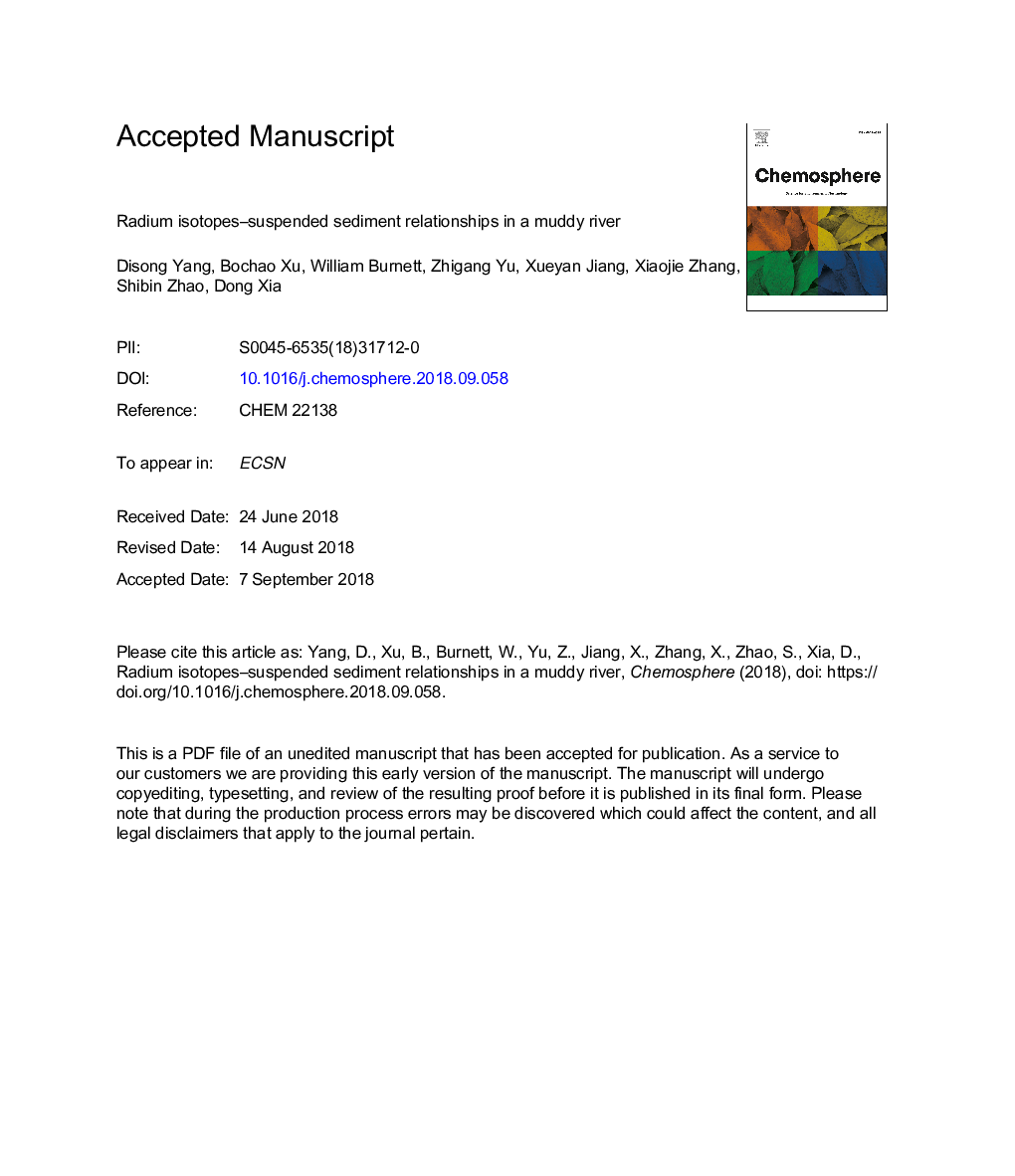| کد مقاله | کد نشریه | سال انتشار | مقاله انگلیسی | نسخه تمام متن |
|---|---|---|---|---|
| 10223414 | 1701028 | 2019 | 25 صفحه PDF | دانلود رایگان |
عنوان انگلیسی مقاله ISI
Radium isotopes-suspended sediment relationships in a muddy river
ترجمه فارسی عنوان
ایزوتوپهای رادیوم - روابط رسوب معلق در یک رودخانه گل آلود
دانلود مقاله + سفارش ترجمه
دانلود مقاله ISI انگلیسی
رایگان برای ایرانیان
موضوعات مرتبط
علوم زیستی و بیوفناوری
علوم محیط زیست
شیمی زیست محیطی
چکیده انگلیسی
Radium isotopes are known to be excellent geochemical tracers for study of oceanographic processes. We show here that radium isotopes can also be used to assess adsorption/desorption and transport processes in rivers. The Yellow River (Huanghe), one of the longest, most turbid and heavily regulated rivers in the world, is used as an example. We first investigated the temporal and spatial behavior of radium isotopes (224Ra and 226Ra) in the lower reaches of the river, and found that this zone displayed some of the highest known riverine radium concentrations and fluxes in the world. Suspended particulate matter (SPM) is shown to be the dominant factor controlling radium activities. Laboratory simulation experiments showed that radium desorption from SPM obeys an exponential relationship in fresh water (Sâ¯=â¯0). When salinities are >10, the increase in radium concentration follows a linear increase with respect to the amounts of SPM added. Significantly higher radium concentrations (3-5 times), especially for short-lived 224Ra, were observed during the “Water-Sediment Regulation Scheme” (WSRS), an annual management event when â¼15%-55% of the annual water discharge and â¼30%-75% of the annual sediment load are released from a reservoir to control sedimentation in the Yellow River. The radium fluxes during WSRS periods (â¼2 weeks long) accounted for more than half of the entire annual load during the periods studied. Sediment erosion and pore water release are also thought to be important processes supplying radium to the river. After a WSRS, Ra desorption from SPM increases and becomes the prevailing process.
ناشر
Database: Elsevier - ScienceDirect (ساینس دایرکت)
Journal: Chemosphere - Volume 214, January 2019, Pages 250-258
Journal: Chemosphere - Volume 214, January 2019, Pages 250-258
نویسندگان
Disong Yang, Bochao Xu, William Burnett, Zhigang Yu, Xueyan Jiang, Xiaojie Zhang, Shibin Zhao, Dong Xia,
